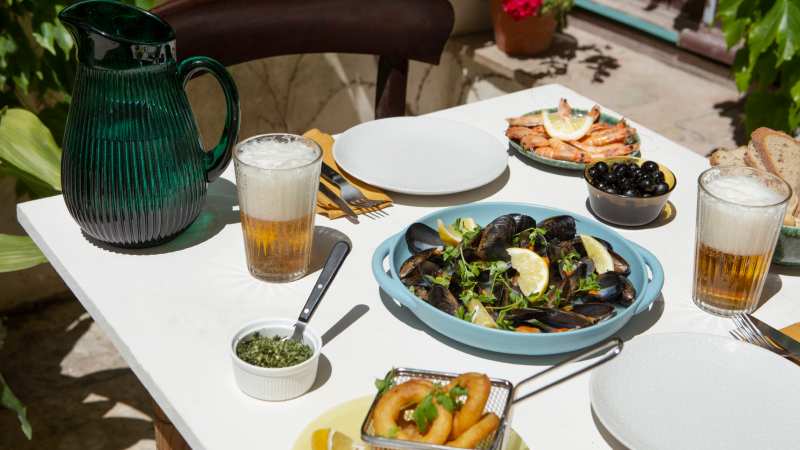The Evolving World of Food
The food industry is constantly changing — influenced by technology, sustainability, global flavors, and consumer preferences. In today’s world, eating isn’t just about nourishment; it’s also about experience, ethics, and innovation. From plant-based dining to AI-generated recipes, the modern food landscape continues to evolve faster than ever before.
The toptenlast latest food trends jalbiteblog highlights how these shifts are reshaping what we cook, eat, and value. Whether you’re a home chef, a foodie, or simply curious about culinary evolution, understanding these trends can help you make smarter, more exciting food choices.
1. Plant-Based Revolution
Plant-based eating has moved far beyond a passing trend — it’s now a global movement. Consumers are increasingly reducing meat consumption and turning to plant-based proteins such as lentils, chickpeas, tofu, and tempeh.
Innovations in food technology have led to plant-based burgers, sausages, and even seafood that closely mimic traditional flavors and textures. This trend is driven by health awareness, animal welfare concerns, and environmental sustainability.
From restaurants to home kitchens, the shift to plant-based meals continues to be one of the toptenlast latest food trends jalbiteblog insights shaping the future of dining.
2. Sustainable and Regenerative Eating
Sustainability has become a defining factor in food choices. Consumers are more mindful about the environmental impact of what they eat — from how ingredients are sourced to how packaging is handled.
Regenerative agriculture, a method that restores soil health and biodiversity, is gaining popularity. People now prefer local produce, seasonal vegetables, and zero-waste cooking methods. The message is clear: food that’s good for the planet is also good for us.
This conscious approach ensures that eating well doesn’t come at the cost of the environment.
3. Functional Foods for Better Health

Today’s consumers view food as medicine. The demand for “functional foods” — those with added health benefits — is skyrocketing. These include foods rich in probiotics for gut health, antioxidants for immunity, and omega-3s for brain function.
From turmeric lattes to chia puddings and fermented kimchi, these nutrient-dense options are becoming kitchen staples. Eating for wellness is not just a diet; it’s a lifestyle transformation.
4. Tech-Driven Food Experiences
Technology has entered the kitchen in surprising ways. Smart appliances, AI recipe generators, and food-tracking apps are redefining how we cook and eat.
3D-printed food, lab-grown meat, and automated restaurants are no longer science fiction — they’re part of the modern food revolution. With the help of AI and data analytics, chefs and companies can now personalize menus based on nutritional needs and taste preferences.
This digital evolution is an exciting part of the toptenlast latest food trends jalbiteblog that connects innovation with everyday dining.
5. Global Fusion Flavors
The world has become a culinary melting pot. People love experimenting with bold and exotic flavors inspired by global cuisines. Fusion dishes — such as Korean tacos, sushi burritos, or Indian-inspired pizza — blend tradition with creativity.
Social media platforms like Instagram and TikTok have played a huge role in spreading these cultural inspirations, encouraging people to try new spices, sauces, and ingredients from around the world.
The result? A more connected, flavorful, and adventurous dining experience.
6. Zero-Waste and Conscious Consumption
Reducing food waste is becoming a priority. Home cooks and restaurants alike are finding creative ways to use every part of an ingredient — from root to stem.
Common techniques include composting, repurposing leftovers, and using food scraps to create broths or sauces. Brands are also using compostable packaging and sustainable sourcing to reduce waste at every step.
This shift not only saves money but also supports a healthier planet — a consistent highlight in the toptenlast latest food trends jalbiteblog discussions.
7. The Rise of Comfort and Nostalgic Foods
Amid global uncertainty, people are turning to familiar flavors that evoke comfort and nostalgia. Think homemade soups, baked goods, and family recipes passed down through generations.
Comfort food doesn’t necessarily mean unhealthy food — it’s about emotional connection and joy. Many modern comfort dishes combine classic flavors with healthier ingredients, like baked versions of fried favorites or gluten-free desserts that taste just as indulgent.
This emotional connection to food continues to be one of the strongest culinary drivers today.
8. Alternative Proteins and Future Foods
With growing demand for sustainable options, alternative proteins are gaining attention. Innovations include lab-grown meat, edible insects, algae-based products, and fermented protein sources.
While some might find these ideas unusual, they represent the next step in solving global food supply challenges. As resources become limited, such innovations could provide nutritious, eco-friendly protein sources for future generations.
These alternatives are a major focal point in the toptenlast latest food trends jalbiteblog research on modern eating.
9. Personalized Nutrition
One size no longer fits all when it comes to food. Personalized nutrition — powered by genetic testing and AI — helps individuals tailor their diets to their unique health profiles.
Whether it’s tracking calorie intake, managing allergies, or optimizing digestion, personalized diets are redefining health and wellness. Apps and wearable devices now guide users to eat according to their biological needs, making food truly personal.
This trend continues to grow, merging science and everyday eating habits.
10. Experiential Dining and Food Aesthetics

Food is now an experience, not just a meal. From immersive pop-up restaurants to molecular gastronomy and themed cafes, dining has become entertainment.
Social media culture has also made food presentation more important than ever. “Instagrammable” dishes with vibrant colors, textures, and plating styles attract attention — influencing how people choose where to eat.
Visual appeal is now just as valuable as taste, marking another evolution in the global dining experience.
11. Beverage Trends: Beyond Coffee and Tea
Beverages are also evolving. Beyond the classic tea and coffee, there’s growing interest in:
-
Kombucha and fermented drinks.
-
Plant-based milks (almond, oat, soy).
-
Herbal infusions for wellness.
-
Low- or no-alcohol mocktails.
These beverages blend refreshment with functionality — designed to energize, detoxify, or relax. They complement today’s food culture perfectly.
12. The Role of Social Media in Food Culture
Food trends now spread faster than ever, thanks to digital platforms. A single viral video can turn a regional dish into a global sensation overnight.
Food influencers and home chefs showcase creative recipes, promoting a sense of community around cooking. As a result, people are cooking more at home, experimenting, and sharing their results online.
Social media has become the ultimate driver of culinary discovery.
Conclusion: The Future of Food is Here
The modern food landscape is dynamic, inclusive, and conscious. Whether it’s sustainability, technology, or personalization, every new trend reflects a deeper awareness of health, environment, and innovation.
Ultimately, the toptenlast latest food trends jalbiteblog remind us that food is about connection — between people, cultures, and the planet. By embracing these trends, we can look forward to a future of food that is smarter, more sustainable, and more delicious than ever.
FAQs on Food Trends
1. What are the major food trends for this year?
Key trends include plant-based eating, sustainable dining, global fusion cuisine, and personalized nutrition.
2. Why are plant-based foods becoming more popular?
People are choosing plant-based options for health, ethical, and environmental reasons.
3. How is technology changing the food industry?
AI, automation, and smart kitchens are making food preparation faster, more efficient, and personalized.
4. What is regenerative agriculture?
It’s a farming method that improves soil health, biodiversity, and environmental sustainability.
5. How can I follow food trends at home?
Start by experimenting with new recipes, ingredients, or cooking methods inspired by global cuisines.

